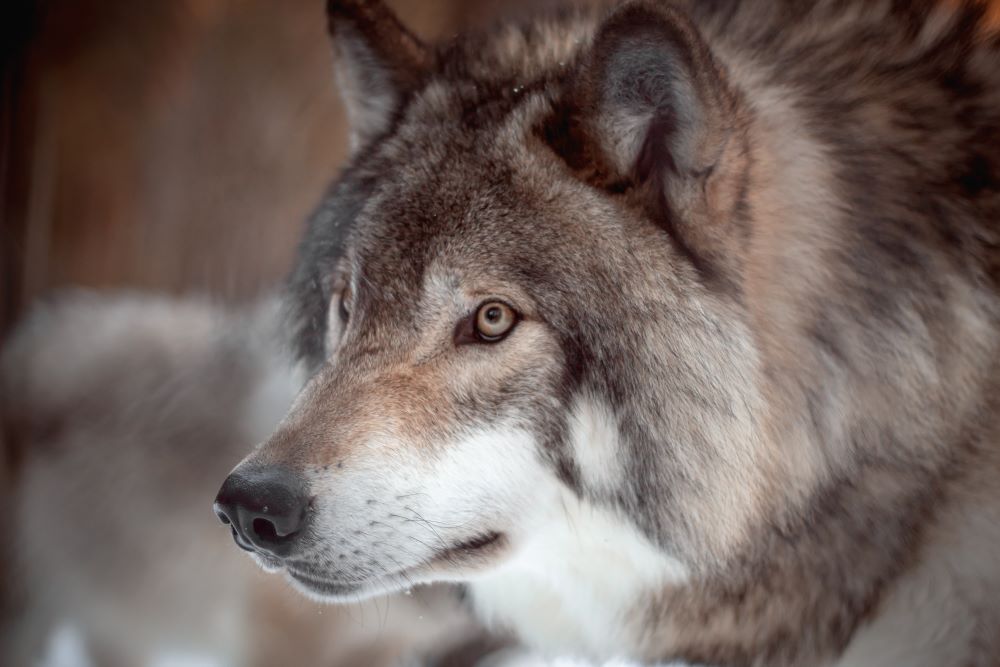|
While in Hungary I researched wolves for an essay. Here are the notes from the interview I did with Dávid Sütő from WWF Hungary.
I’m the Programme Leader of the Large Carnivore Programme at WWF Hungary, mainly dealing with human-wildlife conflicts. I got into this work because of the ecosystem aspect, and because working with charismatic species like large carnivores is really interesting. It’s also really interesting that we’re working on the human-wildlife conflict – it’s psychology, social norms and nature resources. Surrounding large carnivores there can be challenges, because they were missing from almost the whole continent for at least 50 years. There are four large carnivore species in Europe – the wolverine (which is not occurring in Hungary), the grey wolf, the brown bear and the lynx. We didn’t really have wolves since the 1950s until the early 2000s, so we have to relearn how to live with them. We consider wolves and bears as generalist species, meaning they are really flexible about their habitat and prey. We also consider them as opportunistic species, meaning they usually choose the most easily available food and other resources. That’s why we have problem bears sometimes in some areas, especially in Romania, because they are easily habituated to badly managed human food waste. They can cause a lot of problems because we’ve forgotten how to live with them. People moved into towns, livestock keepers turned to a more intensive way of keeping livestock, the forest cover increased, large carnivores have become legally protected, and we stopped persecuting them – so the large carnivores started to come back. It’s a common myth that these are alien species or that they are reintroduced, but it’s actually happening naturally. In Hungary we now have 40-70 wolves. It’s a bit artificial to consider a country a habitat because wolves do not really care about borders. In Hungary large carnivores mainly occur in the Northern Hungarian mountains in three national parks – Duna-Ipoly National Park, Bükk National Park, and Aggtelek National Park. In Europe there are 19K wolves at the moment. Wolves are important because they help balance the ecosystem. We call them the guards of the forest. They are helping the trees regenerate and can help to keep invasive species like racoons at bay, leading to a healthier ecosystem. For a fully functioning ecosystem you need apex predators. Deer avoid patches where it’s too easy to be predated, and that can help the forest regenerate. Wolves can have a beneficial effect on deer population by selecting the old or ill individuals. They are opportunists – they don’t want to fight a big buck – so they try to grab the easiest prey. Wolves are naturally afraid of humans, and that’s true for all large carnivores – but they can learn to find their resources near humans. That’s probably the most dangerous for the species itself, and the humans. What we’re trying to achieve is to move from conflict to coexistence, and we’re trying to do that in several ways. The easiest is around the preventative tools – electric fences and large guardian dogs. But we also consider it important to involve all the stakeholders – livestock keepers and game managers, hunters, conservationists and even the local public. The livestock keepers’ concerns are obvious, because depredation happens – but preventative measures can reduce that. Historically we had dog breeds to help protect the livestock. In Hungary we have a breed called kuvasz. The perception of hunters is not really great in Hungary. They are usually seen as a group who just kill animals for fun. But to take resources in a sustainable way can be acceptable. Hunters have to lease the land where they hunt, and that’s expensive. They also have their conflicts with large carnivores, and sometimes complain that they eat all the prey species – but based on the ecological rules, large carnivores wouldn’t eradicate their prey species because then they would starve. The survival of apex predators in Hungary really depends on our tolerance. In Europe we have this really long cultural history where the natural and anthropogenic landscapes have mingled. We have a shared landscape with large predators. In Hungary, all the carnivores are strictly protected – also at an EU level. If for some reason you want to shoot something you think is a stray dog, you’d better be sure about the species. The problem with all poaching is that these types of cases are usually cryptic. It’s like “shoot, shovel, and shut up”. In the forest there are no witnesses. Poaching is an issue, and not only in Hungary – it’s everywhere. It’s related to the human-wildlife conflicts because the hunters see these species as competition for the deer and livestock keepers as a pest. They shoot these animals because they cause nuisance for them. It’s not really correlated with the damage, it’s more about the perception. And if other locals or members of certain groups think poaching is acceptable or justified, it’s really hard to investigate these types of cases. It’s really important to have a better understanding of the species to avoid misconceptions. Wolves usually live in family packs. It’s not really true that they have ‘alphas’ – there are two parents who lead their family pack of four to six, just like humans with their children. Trying to join another pack can be dangerous – if a lone wolf meets a pack, they might kill them. Being an apex predator is pretty dangerous. You have to battle with prey, and you can injure yourself and then starve to death. Adding to this, roaming long distances, crossing roads and settlements it is not easy and has a risk. Among the pups the mortality is really high. The summer times are not really good for wolves. They’re better at hunting during the cold months – probably because it’s not as easy for prey to hide and they move easier in the snow, although we hardly ever have snow in Hungary anymore. Knowing that wolves are present can cause fear in people, but wolves are not as dangerous as we think. In Northern Hungary, you’re much more likely to get hurt driving a car than you are to be mauled by a wolf. They are more afraid of us than we are of them. The wild specimens that have lived in nature have not attacked anyone and it is crucial to try to keep it in this way. To keep them wild, never bait them with food. Don’t let them to habituate to us, humans and to our resources. To avoid the conflicts we recommend some rules to follow. For example if you are with a dog in the forest, you have to keep it on a leash. Take your waste with you, and obviously never feed a large carnivore. If you are visiting a country with large carnivores try to stay on the hiking routes. Try to do your trips in small groups and chat with each other so the animals have a chance to recognize you as a human and have time to get away. And if you meet a large carnivore, stay cool. Usually it will leave you alone. If you feel threatened, you can clap your hands and shout to scare it away. I’ve always dealt with mammals. You have some kind of kinship with mammals. Because we are mammals too, it’s easier to get in their understanding. But working with mammals is harder than working with other animals like birds. You can see the birds, but if you’re working with mammals, you can see their footprints, scat, maybe some hair – but you never really meet the animal itself. I haven’t met a wolf yet in their natural habitat. Usually only hunters and people who are out in the forest all day meet these types of animals. Comments are closed.
|
AuthorKathryn van Beek (she/her) is a Pākehā New Zealander of Dutch and English descent. A Robert Burns Fellow and a Winston Churchill McNeish Writers’ Fellow, Kathryn has a doctorate on the topic of using writing as a tool for positive change. Archives
April 2024
Categories
All
|


 RSS Feed
RSS Feed